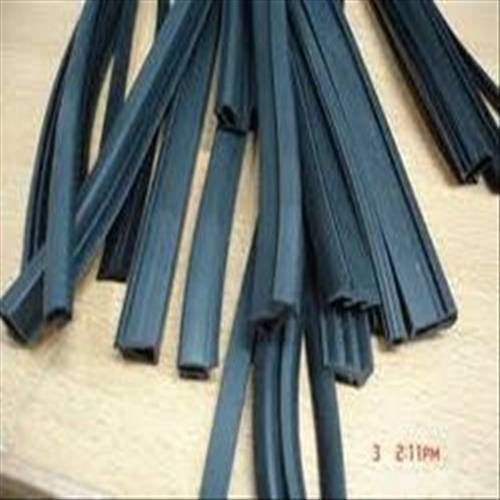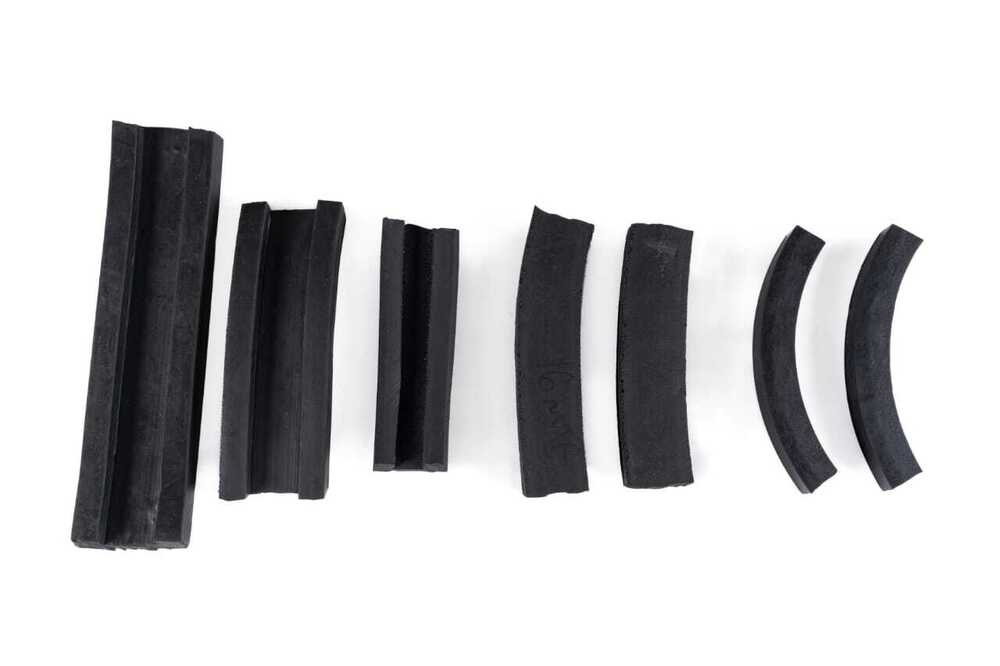

X
Rubber Beading Price And Quantity
- 1 Piece
- 30 INR
Rubber Beading Product Specifications
- Black
- 32 Meter (m)
Rubber Beading Trade Information
- Per Day
- Days
- Yes
- Free samples are available
- Cut piece
- All India
Product Description
Rubber beading refers to a type of material made from rubber that is typically used for sealing, cushioning, or protecting various applications. It is commonly used in construction, automotive, industrial, and manufacturing industries. Rubber beading is known for its flexibility, durability, and ability to provide a tight seal or cushioning effect.
Here are some common uses of rubber beading:
1. Sealing: Rubber beading is often used to create a watertight or airtight seal between two surfaces. It can be found in applications like doors and windows to prevent air or water from seeping through gaps.
2. Cushioning: Rubber beading is used to cushion or dampen vibrations in various settings, such as machinery, equipment, or automotive applications. It can absorb shocks and prevent damage to surfaces.
3. Edge Protection: It is commonly used to protect the edges of materials or components. For example, in the automotive industry, rubber beading is used to protect the edges of sharp metal parts or to provide a soft bumper in various applications.
4. Weather Stripping: In construction, rubber beading can be used as weather stripping around doors and windows to prevent drafts, moisture, and noise from entering a building.
5. Electrical Insulation: Rubber beading with insulating properties is used in electrical applications to insulate and protect wires, cables, and connectors.
6. Automotive Applications: Rubber beading is used in the automotive industry for various purposes, including sealing the edges of windshields and windows, protecting against vibrations, and serving as gaskets in engines.
7. Medical Equipment: In the medical field, rubber beading can be used for cushioning or sealing purposes, such as in the design of medical equipment and devices.
8. Container Seals: Rubber beading is used in the sealing of containers, such as those used in laboratories, pharmaceuticals, and food processing, to maintain product integrity and prevent contamination.
FAQ:
Q. What is rubber beading?
Ans: Rubber beading is a flexible material made from rubber that is used for sealing, cushioning, or protecting various applications.
Q. Where is rubber beading commonly used?
Ans: Rubber beading is used in construction, automotive, industrial, and manufacturing industries for sealing doors and windows, cushioning machinery, protecting edges, and more.
Q. What are the different types of rubber used in rubber beading?
Ans: Rubber beading can be made from various rubber types, including natural rubber, neoprene, EPDM, silicone, and more, depending on the application and environmental conditions.
Q. What are the primary functions of rubber beading?
Ans: Rubber beading serves functions such as sealing, cushioning, protecting, insulating, and providing airtight or watertight seals.
Q. How do I choose the right type of rubber beading for my application?
Ans: Consider factors like the application, temperature, chemical exposure, flexibility, and durability requirements. Consult with a rubber beading supplier or manufacturer for guidance.
Q. Can rubber beading be custom-made for specific applications?
Ans: Yes, many suppliers offer custom rubber beading solutions, allowing you to choose the material, profile, and dimensions that best suit your needs.
Q. What are common shapes and profiles of rubber beading?
Ans: Rubber beading comes in various shapes, including U-shape, D-shape, P-shape, and solid profiles, depending on the sealing or cushioning requirements.
Q. How is rubber beading installed or applied?
Ans: Installation methods vary based on the application. It can be glued, clipped, or mechanically attached to the surfaces it is intended to seal or protect.
Q. Is rubber beading resistant to extreme temperatures and weather conditions?
Ans: The resistance to temperature and weather depends on the type of rubber used. Some rubber types, like EPDM and silicone, offer excellent weather resistance and can withstand a wide temperature range.
Q. Can rubber beading be recycled or disposed of responsibly?
Ans: Rubber beading can often be recycled or repurposed, depending on the specific rubber material. Check with local recycling facilities for guidance on responsible disposal.
Q. What maintenance is required for rubber beading in different applications?
Ans: Maintenance may involve periodic inspections to ensure the beading remains intact and functional. Repairs or replacements might be necessary over time.
Q. Is rubber beading safe for use in applications that involve contact with food or medical equipment?
Ans: Some rubber beading materials are specifically designed for use in these applications and comply with relevant safety and health standards. Always check for food-grade or medical-grade options when needed.
Q. Are there specific safety precautions to consider when working with rubber beading?
Ans: Safety precautions can include wearing appropriate protective gear when cutting or installing rubber beading. Be cautious with adhesives or tools used during installation.
Tell us about your requirement

Price:
Quantity
Select Unit
- 50
- 100
- 200
- 250
- 500
- 1000+
Additional detail
Mobile number
Email






